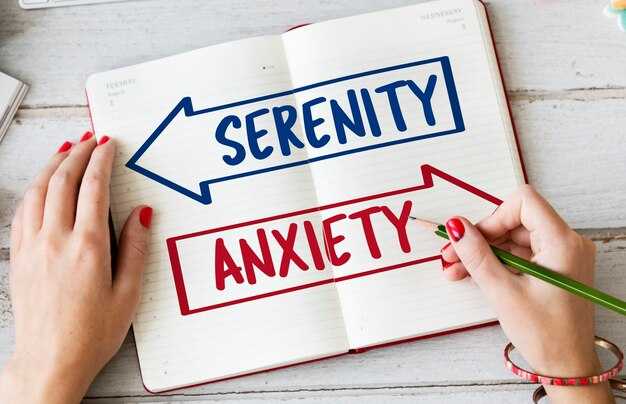What unfolds when one person lives in constant fear of losing love while the other fears being tied down? This isn’t merely a rhetorical flourish — it defines the anxious–avoidant trap. Anyone who has been caught in it knows the result: intense highs, crushing lows, relentless drama, and a confusion that seems to have no end. Picture two nervous systems calibrated in opposite ways. One partner feels safest through closeness — frequent messages, shared details, and clear signals about where the relationship stands. For this anxious person, emotional intimacy equals security, and the idea of losing it triggers an all-out alarm throughout the body. Opposite them sits the avoidant partner, someone who feels most secure when given room. Independence is not merely a preference for them; it functions like a lifeline. As intimacy increases, so does their sense of entrapment: what should be love begins to feel like confinement. Do you notice the contradiction? The very closeness that soothes one person terrifies the other. The more one reaches for connection, the more the other recoils, and what begins as magnetic attraction often slips into a tug-of-war between two frightened attachment systems. This dynamic becomes so combustible because both people are acting out of fear. The anxious partner is driven by dread of abandonment; the avoidant partner is driven by dread of being controlled. When fear meets fear in a relationship, stability rarely follows — volatility does. Take a moment and consider your own history. Have you ever begged for reassurance only to feel the person pull farther away? Have you ever felt overwhelmed by someone’s care, even while craving closeness yourself? That tension — wanting connection but reacting against it — is the hallmark of this pairing. It’s important to see that this pattern doesn’t occur by chance; it unfolds in a predictable cycle. Once the dance begins it escalates through steps of psychological reversal, panic, pursuit, and ultimately pleading. Every phase has a trigger and a consequence; without understanding the mechanics, drama gets mistaken for devotion and fear for passion. The following explanation will outline precisely what occurs when anxious and avoidant attachment styles clash: why the bond can feel so magnetic, why it becomes so agonizing, and, most crucially, what must be known to avoid repeating the same pattern. Before diving into the chaos that arises between anxious and avoidant partners, it’s necessary to explain why these dynamics emerge at all. For that, attachment theory must be introduced. Attachment theory is one of psychology’s foundational insights: it describes how early bonds with caregivers shape adult patterns of relating in romantic relationships. Think of it as an intimacy blueprint written long before a first date ever takes place. Traditionally, three attachment styles are highlighted: secure, anxious, and avoidant (some models add a fourth, disorganized). For the purposes here, focus will be on the two that collide most dramatically — anxious and avoidant. First, consider anxious attachment. If you are anxiously attached, closeness feels essential, like air. Connection fuels you; ambiguity about a partner’s feelings sets off your nervous system. You may overanalyze interactions, send extra messages, or replay conversations repeatedly. Underlying this behavior is a persistent fear of abandonment — not a weakness, but an automatic wiring that treats emotional distance as danger. Now contrast that with avoidant attachment. If you are avoidant, space is what sustains you. Autonomy, freedom, and self-direction are prized, and you’re most at ease when no one appears to be controlling or binding you. Emotional intimacy can quickly feel oppressive. Perceiving that someone is depending on you too much registers as a threat, and the instinctive response is to step back. So why do these seemingly mismatched people attract one another? Ironically, the pairing can feel familiar and thus alluring to both. The anxious partner unconsciously recognizes the distance the avoidant keeps — it echoes the kind of affection they once had to pursue in childhood. The avoidant, meanwhile, experiences the anxious partner’s pursuit as flattering and affirming; at first it feels good to be desired or special, but that same pursuit often becomes overwhelming. Here lies the cruel irony: both partners are attempting to secure safety using opposite strategies. The anxious person believes closeness will bring calm; the avoidant believes space will bring it. Put those beliefs together and a collision course is almost inevitable — the harder one person moves to close the gap, the faster the other retreats. Reflect for a moment: do you recognize patterns of perpetual chasing, proving oneself, or clinging tighter? Or perhaps you identify as the one who flees, feeling suffocated whenever someone nears. These are not moral failings but manifestations of attachment — old nervous-system scripts replaying themselves. Once the script is visible, it becomes possible to recognize how the anxious–avoidant relationship repeats itself until the pattern is noticed and addressed. When attraction shifts from exhilarating to destabilizing, the process known as psychological reversal begins. This is the point where what should feel nourishing — closeness and intimacy — suddenly becomes threatening to one partner. In the anxious partner’s experience, the early phase can feel intoxicating: deep connection, constant communication, powerful chemistry, and a sense of safety with every shared moment. Thoughts like “This is it — I’ve found my person” dominate. For the avoidant partner, that very closeness initially delights — the attention confirms desirability and importance — but before long, the intensity of pursuit can feel too much, prompting withdrawal.

At first, their bond feels thrilling, but as it deepens something inside their nervous systems shifts. What once seemed flattering morphs into a perceived loss of autonomy. The psychology behind this is straightforward: the avoidant partner often responds through what psychologists call reactance. Reactance is the reflexive backlash people experience when they sense their freedom is threatened, even if no one is overtly controlling them. For an avoidant person, closeness is processed as confinement, and the instinct is to pull away. So while the anxious partner moves closer—seeking reassurance, initiating plans, asking for connection—the avoidant partner retreats. Not out of indifference, but because their nervous system is flashing alarm: too much closeness. Back off. This is the reversal: the very thing one person is desperate for becomes the thing the other dreads. Consider a simple example: an anxious person texts, “Where are you? I miss you.” To them it’s an expression of love. To the avoidant, the same line reads like pressure: Why are they checking on me? Do I not have space? In an instant, one nervous system reads bonding while the other reads suffocation—same event, opposite meanings. And neither reaction is inherently wrong; they are different survival programs. The anxious individual is programmed to pursue closeness as safety; the avoidant is programmed to preserve distance for safety. That reversal is the first domino. Once it tips, the cycle accelerates into panic. As the avoidant withdraws and the anxious leans in, the anxious partner’s attachment system triggers full alarm. Biologically, when the avoidant pulls back even a bit, the anxious person’s brain interprets that distance as a threat of abandonment: the amygdala blares like a smoke alarm, cortisol surges, heart rate climbs, sleep is disrupted, and thoughts become obsessive. This is not mere feeling—it is physiology crying, “Danger, you’re losing connection.” In response, the anxious partner intensifies efforts: more texts, more calls, replaying conversations, hunting for hidden signals. This is attachment system hyperactivation; the body and brain will do anything to close the gap and restore safety. Picture the pattern: one message—”Hey, are you okay? Haven’t heard from you”—goes unanswered; thirty minutes later another appears; an hour later a frantic plea: “Please just call me.” To the anxious person, this is survival, not neediness. Inside the avoidant, however, the exact same escalation triggers a very different defense. The more the anxious pursuits mount, the more trapped the avoidant feels. Their panic doesn’t look like frantic contacting; it looks like withdrawal. Avoidant people deploy deactivation strategies: convincing themselves the relationship isn’t that important, immersing in work or hobbies, fantasizing about leaving. Numbing or disengaging is their method of calming an alarmed system. So two nervous systems are shouting two opposite imperatives: anxious—get close, reassure me; avoidant—step away, give me space. Both are terrified, one of abandonment, the other of entrapment, and fear comes to run the relationship. The tragedy is that the anxious person’s attempts to secure closeness tend to deepen the avoidant’s retreat, laying the groundwork for escalation into pursuit. Panic becomes pursuit: the anxious person, now fully activated, convinces themselves that if they can just elicit a response, everything will settle. They chase—relentless messaging, unannounced appearances, urgent demands for conversation: “We need to talk right now. I can’t take this.” To the pursuer, these acts feel essential; to the distancer, they read as suffocation. Remember reactance: any perceived pressure provokes pushback. The result is predictable: the closer one moves, the farther the other steps; the louder one pleads, the harder the other shuts down. In practice it looks like this: “Why didn’t you call me back last night? Don’t you care about us?” the anxious asks. The avoidant hears control and criticism and answers with distance: “I just need some space. You’re overwhelming me.” The anxious panics and pursues harder—”Please don’t do this. Talk to me. I can’t lose you”—and the avoidant’s thought becomes, “I need to get out of here.” Both are trying to survive, but their strategies undermine safety. Rather than bringing them together, the pursuit cycle accelerates the breakdown: desperation on one side, suffocation on the other, mutual misunderstanding. When pursuit fails, the dynamic often slides into its most painful phase—the begging stage. After repeated attempts—texts, calls, explanations, arguments—desperation can take over. Begging might be literal pleading—”Please don’t leave me. I’ll change. Tell me how.” It can be ultimatums—”If you go, I’ll never forgive you”—or bargaining—”What if we take a break? Let’s try again tomorrow.” At its core, begging isn’t manipulation; it is panic-driven survival. The anxious nervous system has collapsed into fear of abandonment and will trade dignity, boundaries, even self-respect to preserve connection. The avoidant in this phase often appears cold, distant, or even cruel—stonewalling, ceasing to respond, sometimes ghosting. Internally, though, they are overwhelmed by a different terror: the fear of being consumed or controlled. To cope, they double down on deactivation: downplaying the relationship, convincing themselves it didn’t matter, because feeling the depth of guilt and fear would be unbearable. The scene then becomes stark: on one side raw pleading, tears, ultimatums; on the other, silence or withdrawal. This is the dramatic apex of the anxious-avoidant dance, devastating both. The anxious feels unlovable and too much; the avoidant feels trapped and confirms fears of losing freedom. Both operate from fear, and both walk away from the exchange worse for wear—the anxious ashamed of how much they begged, the avoidant guilty about how cold they were. Often, this isn’t the end. Reconciliation, relief, and then the same cycle repeats, which explains why the pattern can feel addictive and destructive at once. Over time these interactions leave scars that don’t simply fade. After the storm, exhaustion sets in—this is the aftermath. The anxious person, having emptied themselves in pleading, collapses under shame, replaying every moment and berating themselves: “I shouldn’t have begged. I looked pathetic. Why am I always too much?” The very panic-driven behaviors that sought safety now fuel self-criticism. The avoidant, superficially relieved to have regained space, often battles creeping guilt and confusion: “Why can’t I love the way they need me to? Why do I pull away when someone gets close?” Even while insisting they were only preserving freedom, part of them knows they are fleeing intimacy. Both partners end up wounded—the anxious rejected and shamed, the avoidant guilty and misunderstood. Neither feels safe or genuinely loved. A cruel truth follows: each person tends to believe they’re the problem. For the anxious partner the fallout often looks like excessive apologies, overcompensation, or self-blame for the distance; their nervous system is depleted even as their mind hunts for fixes—Maybe if I try harder, they won’t pull away. For the avoidant, the aftermath often takes the form of withdrawal into work or distractions, or fantasies of leaving—not from lack of care but because the emotional cost feels intolerable. Paradoxically, once the anxious steps back after a crisis, the avoidant sometimes feels oddly free to re-engage—this is the push–pull paradox and the reason the cycle restarts after temporary calm. Moments of reconciliation—apologies, fleeting intimacy, relief—may occur, but underneath nothing fundamental has shifted: the same triggers and wiring remain. Over time, the pattern corrodes well-being. The anxious may start to internalize being unlovable. The avoidant may conclude they are incapable of true intimacy. The relationship becomes organized around fear and recovery instead of predictable care. Many accept the hollow quiet that follows an episode as normal, mistaking it for peace, not seeing that it is simply the calm before another re-ignition. That’s why it’s crucial to understand the long-term risks and what to do about them. Continued repetition erodes identity: the anxious risks losing themselves in constant accommodation, apologizing, and overfunctioning to keep the bond; the avoidant risks emotional isolation and building walls so tall intimacy becomes impossible. Together, the couple risks conflating fear with love—the dizzy highs and painful lows can become addictively familiar but are not stable or healthy; they are re-enactments of earlier trauma. Yet it must be stressed: there is no villain here. The anxious partner isn’t merely needy, nor is the avoidant simply cold; both carry survival strategies learned during development. One learned to chase closeness to feel safe; the other learned to withdraw to stay safe. Framing it this way shifts the focus from blame to understanding. From there, a path forward becomes possible. Awareness is the first and most vital step: naming the cycle frees people from feeling trapped by it and helps them identify triggers—the text that reads like pressure, the silence that reads like rejection—so they can pause and choose a different response. For the anxious person the work involves learning to self-soothe, regulating the nervous system so reassurance isn’t outsourced entirely to a partner. For the avoidant person the work involves building tolerance for closeness and recognizing that intimacy is a bridge, not a trap. Practically, change often requires help—therapy or coaching, supportive relationships that model secure attachment, and sometimes the hard choice to leave the pattern if one or both partners refuse to grow. Still, there is hope: these patterns can be rewired. Healing and movement toward a secure attachment style are possible, where closeness feels safe and space doesn’t translate to abandonment. If this description resonates—whether one recognizes themselves as the pursuer or the distancer—avoid shame. See these reactions for what they are: nervous systems trying to protect survival. Then take one measured step toward breaking the loop. Stop the dance, and you stop the drama. Only then can steady, safe, and secure love become attainable.



 Anxious vs Avoidant: The Dramatic Relationship Trap You Can’t Escape | Avoidant attachment style">
Anxious vs Avoidant: The Dramatic Relationship Trap You Can’t Escape | Avoidant attachment style">

 The Final Dirty Trick Avoidants Use When You Stop Caring (This Will Hurt) | Jordan Peterson">
The Final Dirty Trick Avoidants Use When You Stop Caring (This Will Hurt) | Jordan Peterson">
 Don’t Let These Attachment Styles Hurt Everyone (4-Video Compilation)">
Don’t Let These Attachment Styles Hurt Everyone (4-Video Compilation)">
 How much PAIN have you BURIED in your Marriage?">
How much PAIN have you BURIED in your Marriage?">
 Quick Technique to Instantly Change How You See the World">
Quick Technique to Instantly Change How You See the World">
 Get Out of Romantic Obsession And Open Your Life to Real Love">
Get Out of Romantic Obsession And Open Your Life to Real Love">
 7 SECRET TESTS You MUST Pass for AVOIDANTS to CHOOSE YOU | Avoidant Attachment Style">
7 SECRET TESTS You MUST Pass for AVOIDANTS to CHOOSE YOU | Avoidant Attachment Style">
 Why You Might Still Feel Lost — EVEN After Therapy, Courses & Trying Everything">
Why You Might Still Feel Lost — EVEN After Therapy, Courses & Trying Everything">
 When the Bedroom becomes a Chore…">
When the Bedroom becomes a Chore…">
 I Had No Friends… But Here’s What Finally Changed">
I Had No Friends… But Here’s What Finally Changed">
 Dlaczego osoby unikające gonić Cię tylko wtedy, gdy wyzwalane są te 3 ukryte potrzeby | Styl przywiazania unikającego">
Dlaczego osoby unikające gonić Cię tylko wtedy, gdy wyzwalane są te 3 ukryte potrzeby | Styl przywiazania unikającego">